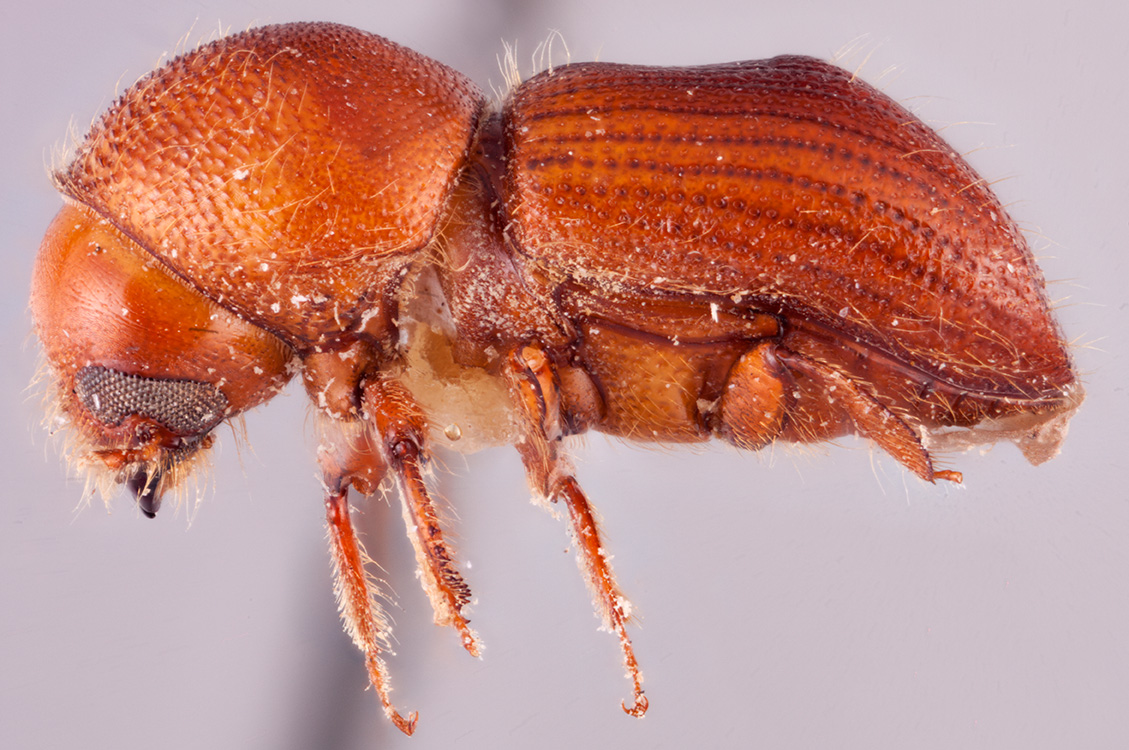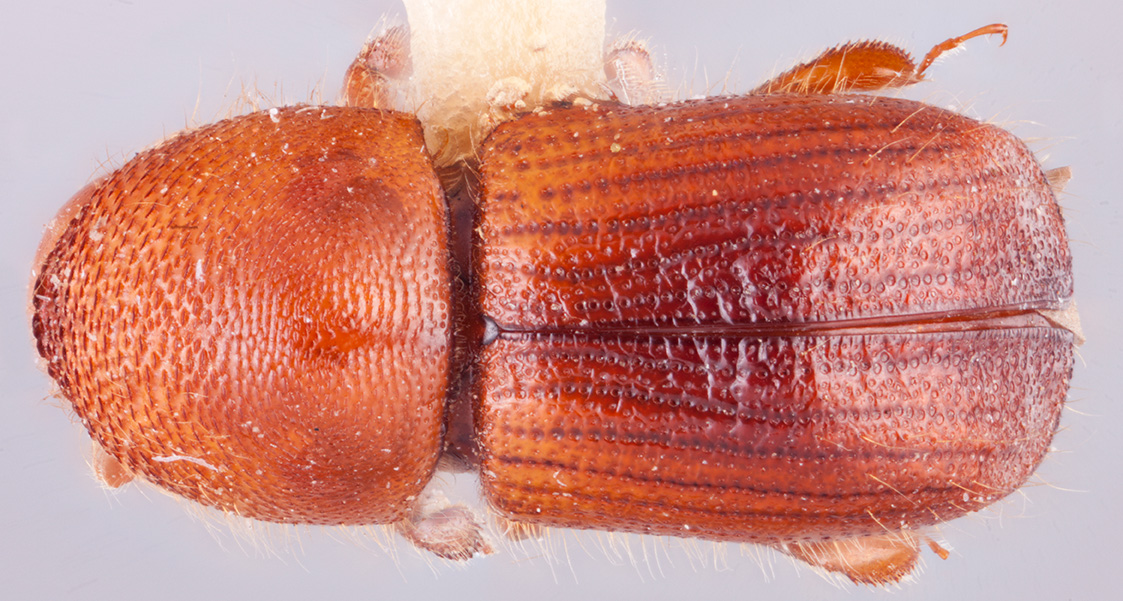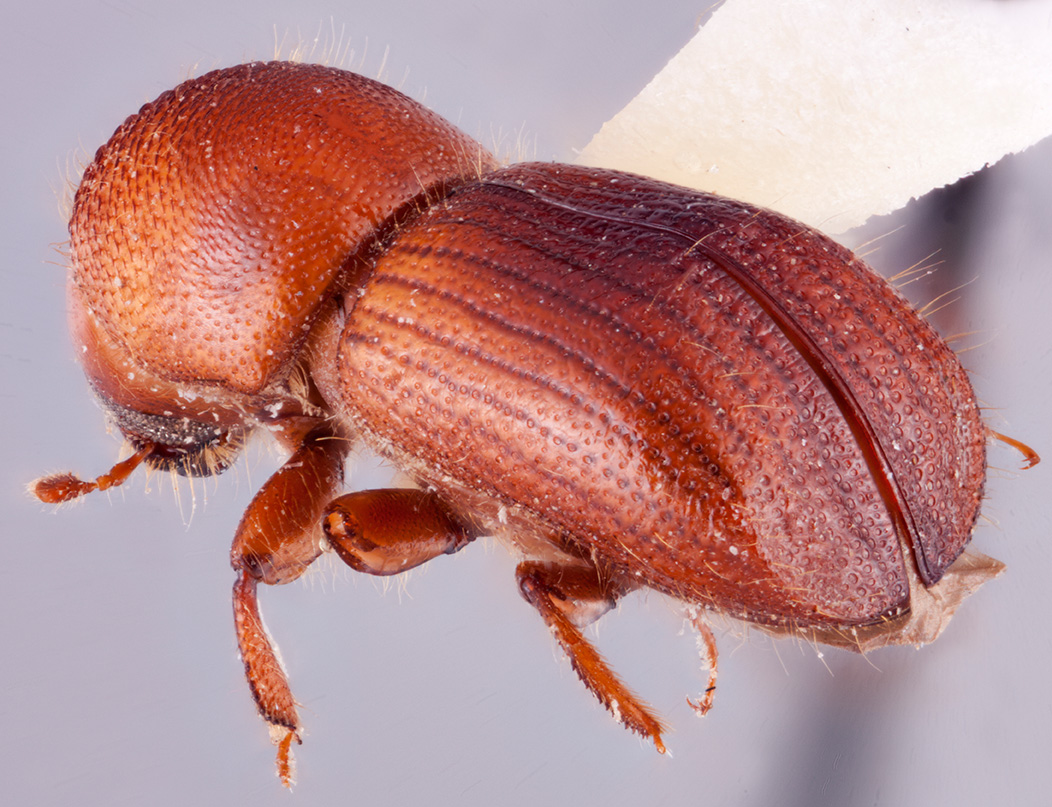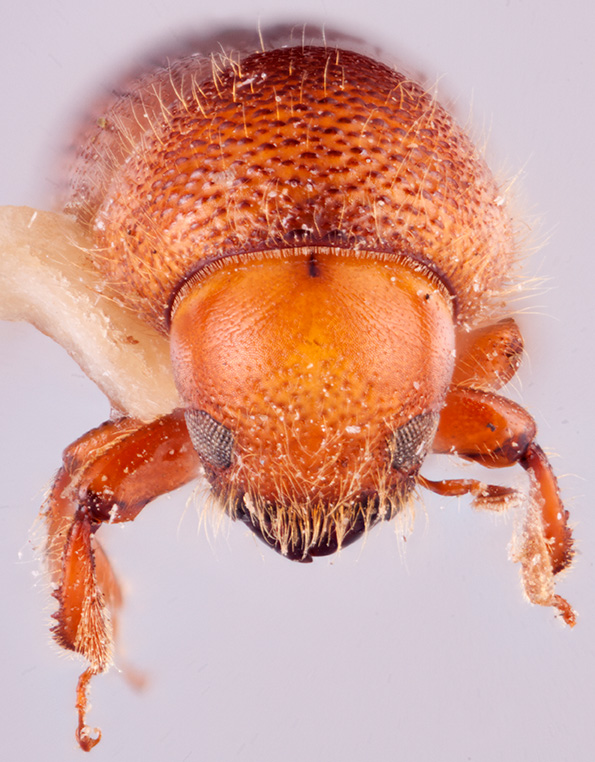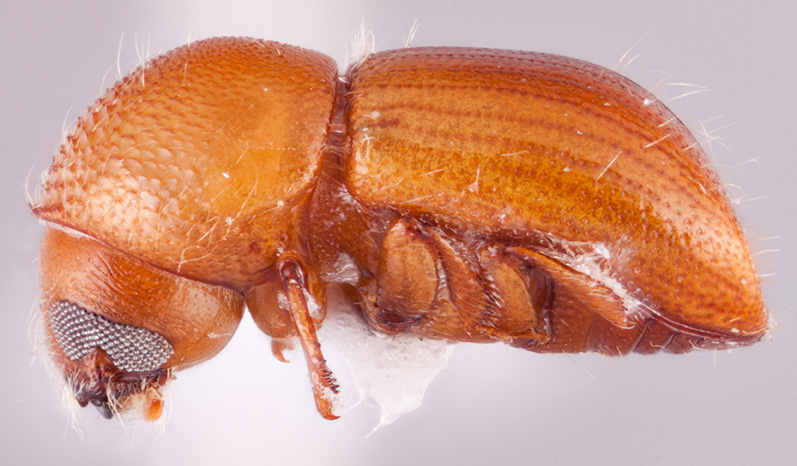Beaverium
|
Beaverium magnus; R.K. Osborn |
|
Beaverium magnus; R.K. Osborn |
|
Beaverium magnus; R.K. Osborn |
|
Beaverium magnus; R.K. Osborn |
|
Beaverium lantanae; R.K. Osborn |
Taxonomy
Beaverium Hulcr and Cognato, 2009: 25.
Diagnosis
Large and robust species, 4.1−5.6 mm long, 2.2−2.55 times as long as wide. Beaverium can be distinguished by the elytralelytral:
pertaining to the elytra
declivitydeclivity:
downward slope of either the pronotum or elytra
 distinctly flattened and posterolaterally broadened; posterolateral declivitaldeclivital:
distinctly flattened and posterolaterally broadened; posterolateral declivitaldeclivital:
pertaining to the elytral declivity
costacosta:
elevated ridge that is rounded at its crest, not necessarily with sharp appearance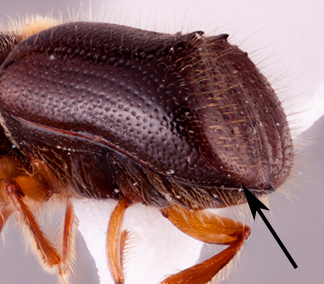 terminating at interstriaeinterstria:
terminating at interstriaeinterstria:
longitudinal spaces along the elytra between the striae, which is not as<br />
impressed and bear smaller punctures.
 5; pronotal discdisc:
5; pronotal discdisc:
the flat central upper surface of any body part (e.g. pronotum and elytra) punctate; pronotum anterioranterior:
punctate; pronotum anterioranterior:
the front or forward; opposite of posterior margin with continuously elevated carinacarina:
margin with continuously elevated carinacarina:
an elevated ridge or keel, not necessarily high or acute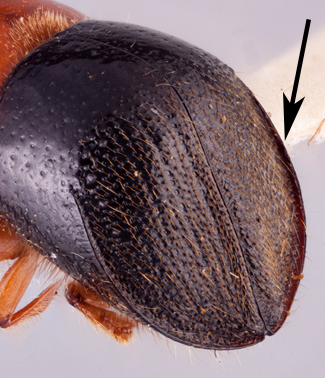 ; scutellum flat, flush with elytra; mycangial tufts absent; and procoxae contiguous.
; scutellum flat, flush with elytra; mycangial tufts absent; and procoxae contiguous.
May be confused with
Ambrosiodmus, Terminalinus, and Immanus
Distribution
throughout mostly tropical regions of Asia, Australasia, and Oceania
Gallery system
This appears to have been described only in B. insulindicus (Eggers), a species not found in the study region. Based on observations in Fiji, Roberts (1977) notes a short radial gallery, penetrating 2–4 cm, with several longitudinal galleries parallel to the stem axis, all in the same plane, and without enlarged brood chambers.

